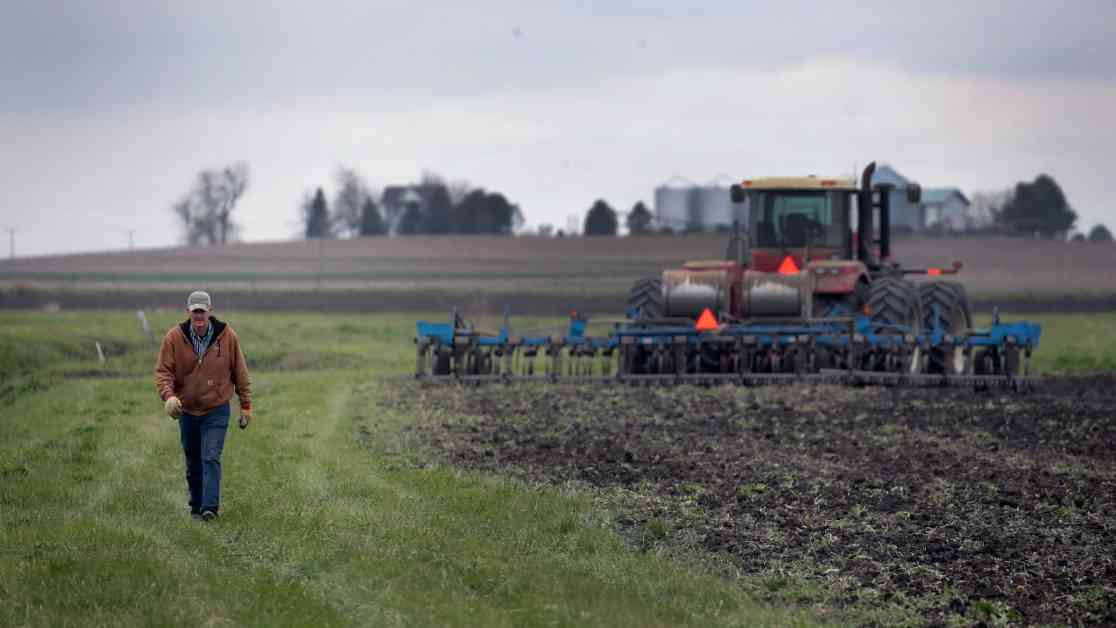Farming has always been a risky business. From unpredictable weather conditions to fluctuations in prices and the constant threat of disease, farmers must navigate a complex landscape to grow food for sale. Recently, farmers in the United States faced a new challenge with the introduction of tariffs under the second Trump administration.
On Tuesday, March 4th, President Donald Trump announced a 25 percent tariff on all goods imported from Canada and Mexico, as well as a 10 percent tariff on goods from China. This decision had significant implications for farmers who rely on potash, a vital plant nutrient that the U.S. predominantly imports from Canada.
The news sparked a wave of concern among farmers, agricultural researchers, and economists. Potash, a key component of most commercial fertilizers, plays a crucial role in plant growth by facilitating the movement of water and nutrients within crops. Stephen Wood, a senior scientist at the Nature Conservancy, highlighted the importance of potassium, particularly for crops with large fruiting bodies like tomatoes, melons, grapes, peaches, and strawberries. Additionally, corn and soybeans, which make up a substantial portion of America’s commodity crops, also heavily depend on potassium for their development.
With the U.S. corn industry alone utilizing over 2 million tons of potash annually, the tariff on this essential nutrient posed a significant threat to farmers. Silvia Secchi, an agricultural economist at the University of Iowa, expressed concerns about the potential impact on corn growers. She speculated that some farmers might reconsider the amount of corn they grow due to the increased costs associated with the tariff.
In response to the initial tariff announcement, Kenneth Hartman Jr., the president of the National Corn Growers Association, urged the president to strike a trade deal that would balance national security interests with the needs of farmers. Senator Chuck Grassley also voiced his plea for potash to be exempt from the tariff, highlighting the importance of this nutrient for Iowa, a state that leads the nation in corn production.
As farmers grappled with the implications of the tariff, the debate around its economic impact intensified. Bob Hemesath, an Iowa corn grower and board member of the National Corn Growers Association, emphasized the detrimental effects of the 10 percent tariff on potash. He noted that the additional cost would further burden farmers who are already facing high input costs.
The potential consequences of the tariff extended beyond economic concerns. Farmers feared that the increased cost of fertilizer could lead to a decline in soil health, impacting crop resilience and overall sustainability. Wes Gillingham, president of the Northeast Organic Farming Association of New York, criticized the tariff as a misguided policy that demonstrated a lack of understanding of agricultural practices.
Amidst these challenges, some farmers began exploring alternative agricultural practices to mitigate the impact of the tariff. Michael Happ, from the Institute for Agriculture and Trade Policy, highlighted the growing interest among large-scale growers in regenerative agriculture as a sustainable approach to farming. This shift towards more environmentally friendly practices could offer farmers a pathway to reduce their reliance on commercial fertilizers like potash.
However, the tariff on potash coincided with broader policy changes that posed additional hurdles for farmers. The Trump administration’s actions, including the removal of USDA resources supporting organic farming and the closure of local USDA offices, further strained the agricultural community. Critics argued that these decisions undermined farmers’ ability to adapt to the challenges posed by the tariff.
As experts and farmers alike grappled with the implications of the potash tariff, one thing remained clear – the agricultural industry was facing an uncertain future. Despite the resilience of large-scale farmers, the collective impact of these policy changes threatened to disrupt farms of all sizes, leaving many in the industry facing an uphill battle to maintain their livelihoods and ensure food security for the nation.














